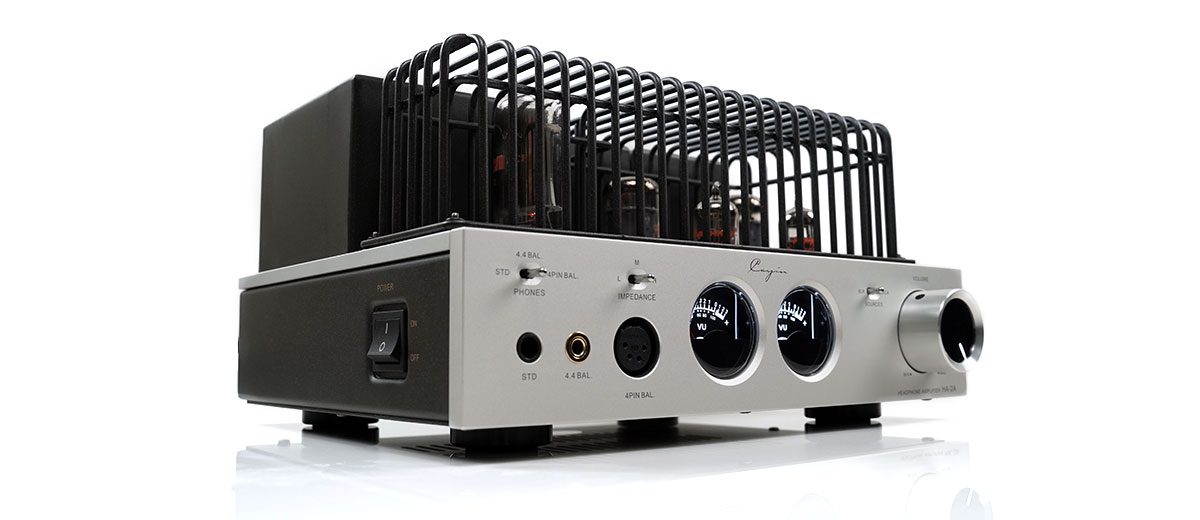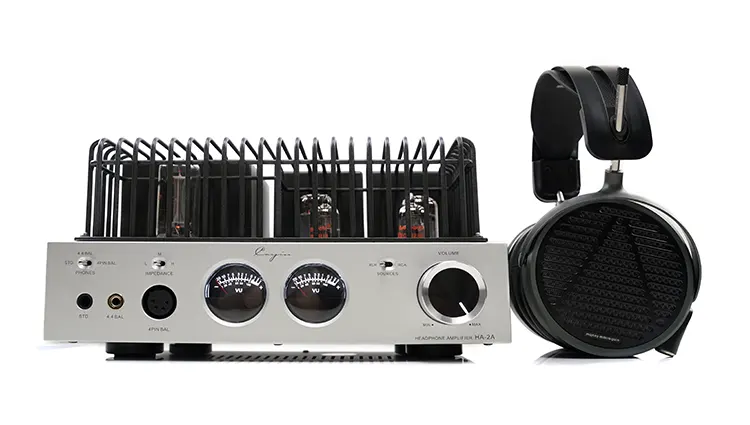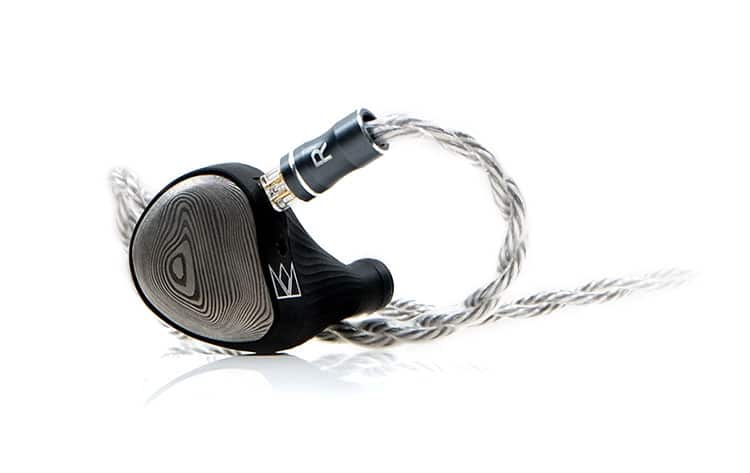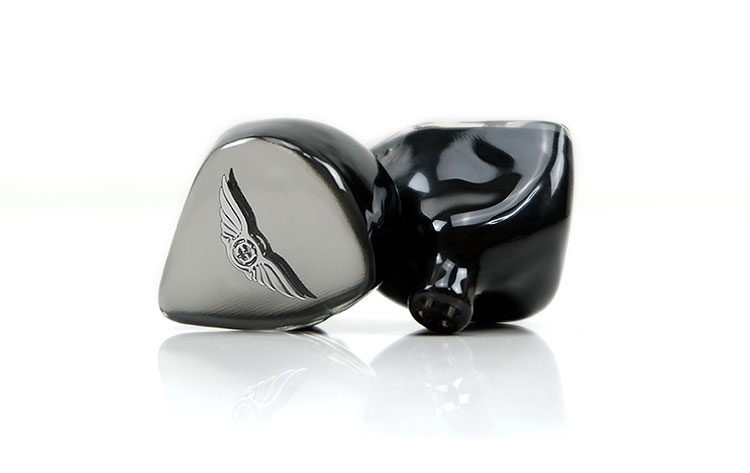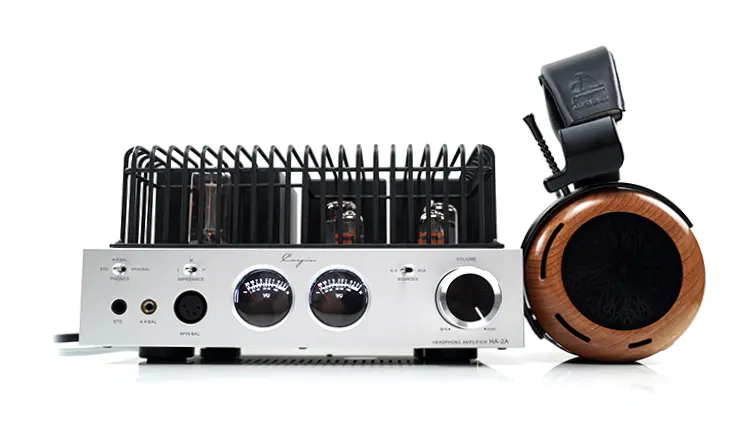Sound Impressions
The following sound impressions were created using a mix of the iBasso SR3, the Austrian Audio Composer, and the Noble Audio Viking Ragnar for headphones and IEM testing. My main sources were the LO’s from the Cayin Mini-CD MK2 single-ended and the iBasso DX320 MAX Ti balanced.
Summary
I have affectionately dubbed the HA-2A the ‘equalizer’ in the last few weeks testing it with a wide variety of gear. Mostly so for its unerring ability to convert any set of headphones, be it a deadpan reference or bombastic colored alternative into this infectious, lush, and joyfully weighted sound signature.
It is a super easy listening experience, but also one that evokes an emotional connection with strong vocal performances dripping in euphony and a prolonged bass shelf rich in classic tube bloom that can transform even the most conservative set of headphones.
Do you think the HIFIMAN Arya Stealth is a bright headphone with some bass extension? The HA-2A disagrees. Perhaps you believe the Austrian Audio Composer will always deliver a clean reference sound. The Cayin can change your mind.
This amplifier is not just for headphones either. IEM users will get a lot of satisfaction from the reduced power levels from its 4.4mm connection. Microphonics are nicely controlled and background hiss is minimal, with only a slight left-channel imbalance on low volume levels.
This can be a great desktop pairing for IEMs that offer a high-contrast tonal signature, perhaps a leaner lower-midrange or a brighter treble tuning. Dynamic driver hybrids benefit from the pleasing levels of mid-bass density and punch from the HA-2A.
If you are a Noble Audio Viking Ragnar user then this pairing will surprise you in a good way with excellent low-end impact, a richer set of mids, and a smooth treble performance.
The only gear that I would caution when pairing with the HA-2A is those that already have a warm or relaxed sound signature and or combined with a limited soundstage capability. Here the sound can get overly rounded and lacking in air compared to a more neutral-sounding amplifier.
Timbre
There should not be too many surprises here when I tell you the HA-2A produces a rich-sounding classic tube timbre with a better-than-expected mid-bass punch, some upper bass bloom, and a forward fulsome vocal note, especially higher pitching vocals.
Those coming from the now equally priced Auris HA-2SE+ will find the HA-2A more to the euphonic side with the Auris tuning smooth but comparatively neutral in its imaging and a bit more conservative in terms of warmth and body through the lows.
It’s missing just a little bit of presence sub-50Hz with hybrids such as the Liquid Platinum edging the HA-2A in sub-bass ‘oomph’ but still manages to sound ‘big’ on the low-end courtesy of some heightened mid-to-upper bass weight.
Do not expect the HA-2A lows to be as tightly defined as your typical resistor-based solid-state performance. Though by no means a flabby delivery it is more to the dense but pillowy end of the scale.
The HA-2A does not have quite the same airy reach in the highs as the flagship HA-300MK2 but I would not classify the resulting sound signature as dark.
Rather, it veers more to creamy and smooth than sweet and sparkling with some tastefully elongated decay that I found better suited to open and airy-sounding headphones and IEMs.
Staging & Dynamics
Give the HA-2A enough room and space and it will gladly fill it up producing a fairly holographic staging quality with a mid-bass and vocal bias in terms of imaging.
Airy headphones and IEMs such as the iBasso SR3, the Composer, and the Noble Audio Viking Ragnar sounded atmospheric with pleasing staging depth from front to back and a better-than-expected bass fundamental.
Is it the last word in sub-bass reach? No, this is not a Feliks Envy and competing hybrids such as the Liquid Platinum have a stronger grip at the very lowest point in most of my tested headphone pairings.
However, the full-sounding lower-mids and excellent mid-bass density give the perception of a ‘big’ low-end sound, much more so than the more neutral imaging of the Auris Audio HA-2SE+ for example.
My only critique concerns more intimate-sounding gear which tends to prefer a drier tone or a shorter level of decay to sound optimal for bass layering and staging clarity.
IEMs such as the VE10 and the Audeze MM-500 struggled a little with the bass bloom sounding creating an overly-rounded sound in the case of the MM-500 or losing midrange clarity in deference to the upper bass dominance as was the case of the VE10.
Better matches are headgear which might bias more to the neutral side for lower mids imaging, offer more space through the mids, or deliver stronger levels of bass-to-mids separation.
Synergy
Power & Impedance
The HA-2A is single-ended by design and rated at a maximum of 1W output. However, the precise parameters and available peak power depend on the impedance management selector switch and your desired PO or output connection.
The strongest output power is via its 4-pin XLR output at 800mW on the low impedance selection up to 64Ω, 900mW up to 250Ω, and 1W up to 600Ω making it a good choice for both planar and high impedance headphones.
Efficient planar headphones such as the Audeze MM-500 and the Meze Audio Empyrean II have more than adequate headroom and do not drive the HA-2A volume too far north on the low impedance setting.
The 6.35mm output is reduced to 330mW on the low impedance value up to 750mW on the highest value which, again, should be plenty for high impedance dynamic driver headphones whose typical maximum power handling is 200-300mW, for example, the ZMF Headphones Atrium Closed and the iBasso SR3.
The 4.4mm PO seems to be a tailored solution more for IEM users and sensitive headphones ranging from 200mW to 270mW output power through the 3 impedance values.
I went through about 10 pairs of IEMs going from 3-4Ω to about 60Ω and some with flat impedance technology and none of them displayed any worrying microphonics or background hiss issues when paired with the HA-2A. You have to give the amp a considered tap to get any noticeable pings from the tubes.
Even with sensitive IEMs such as the Vision Ears VE10, I did not find volume control unmanageable though with all 10 IEMs I found a little bit of left channel bias on low volume settings. However, it is brief and not something you hear at normal listening levels.
IEM Pairings
The HA-2A’s warm and dense-sounding coloration did produce some strong pairing preferences for IEMs. Some of the best pairings were clean-sounding monitors by default with stronger treble presence or tightly controlled but highly responsive low-end dynamic drivers.
The Noble Audio Viking Ragnar sounded gorgeous with the HA-2A, one of the best pairings tested for getting to grips with its energetic highs to produce a pleasingly sweet tonal quality through its midrange presentation.
Perhaps more surprising was the excellent weight and punch of its dual dynamic driver setup on the lows. Normally I define the Ragnar set of lows as deep but moderate in bloom, which is not the case here with a great bass shelf and a warmer set of lower mids.
Another excellent performer was the FIR Audio e12‘s single dynamic driver which has a stronger than neutral treble presence and deep lows. The HA-2A did extremely well here retaining that core character but softening the highs a little more to create a smooth but energetic performance.
Some IEMs sounded a little overly rounded from insufficient treble contrast or suffered from too much low-end warmth masking some needed midrange clarity with the HA-2A.
For example, the Vision Ears VE10 carried too much bloom through the lower mids and upper bass and blunted the vocal contrast producing a less appealing rounded tonal quality.
The VE EXT also seemed to suffer from excess bloom through the bass and lower-mids and reduced treble bite resulting in a suffocated and rounded vocal presence. Both of these IEMs sounded much cleaner and clearer from the PO of the iBasso DX320 MAX Ti.
Impedance Shaping
You do not need to keep the HA-2A at a low impedance value with IEMs. Its limited power parameters mean you can safely go from low to high without causing too much tonal shifting or harm.
What I did find as a general rule of thumb for the 4.4mm IEM pairings is the smoother more balanced imaging will come from the low impedance with dynamics and impact more emphasized on the higher setting.
BA IEMs such as the Softears RS10 and the Empire Ears ESR MKII sounded smoother tonally and more balanced imaging-wise on the low impedance setting. The ESR MKII in particular sounded intoxicating through the mids and vocals.
Switching up to high impedance generated a more ‘stressed’ sound signature from both IEMs with a harder-edged treble tonal quality that I found less appealing.
However, some IEMs sounded more immersive and dynamic on the high impedance value such as the Viking Ragnar. I was expecting its treble to sound sharper on the high setting but with the foam tips and stock 4.4mm cable, its enhanced presence still sounded quite rich and liquid in tone.
Headphone Pairings
I found impedance shaping as important for headphone performance as the amount of power available from the 4-pin XLR or the 6.35mm output connections.
Generally speaking, the impedance selector on the HA-2A plays true to the impedance level of the headphones. That means if you set it correctly the performance should be optimal with the most noticeable impact on the bass weight followed by the staging depth.
For example, the 22Ω reference-level Austrian Audio Composer delivers better extension on its bass performance and a more open midrange compared to switching to the HA-2A medium and high impedance options. The latter two kill the dynamics and flatten the staging qualities considerably.
You get a similar case also with the HIFIMAN Arya Stealth. It sounds robust and relatively full sounding with smooth highs from the 4-pin XLR with a low impedance setting. One on a higher impedance level it sounds unbalanced and shallower in its sub-bass extension.
The ZMF Headphones Caldera Closed sounds optimal with the medium impedance setting, striking the best balance between its signature bass ‘gusto’ and midrange clarity. Either side of the medium produces an unnaturally low level of bass weight or an abbreviated extension.
The absolute best pairing used for this review was the dynamic driver iBasso SR3. A 150Ω headphone that excelled with the high impedance setting on the HA-2A. It sounded immersive with a natural and smooth tonal quality and excellent dynamics on the lows.

